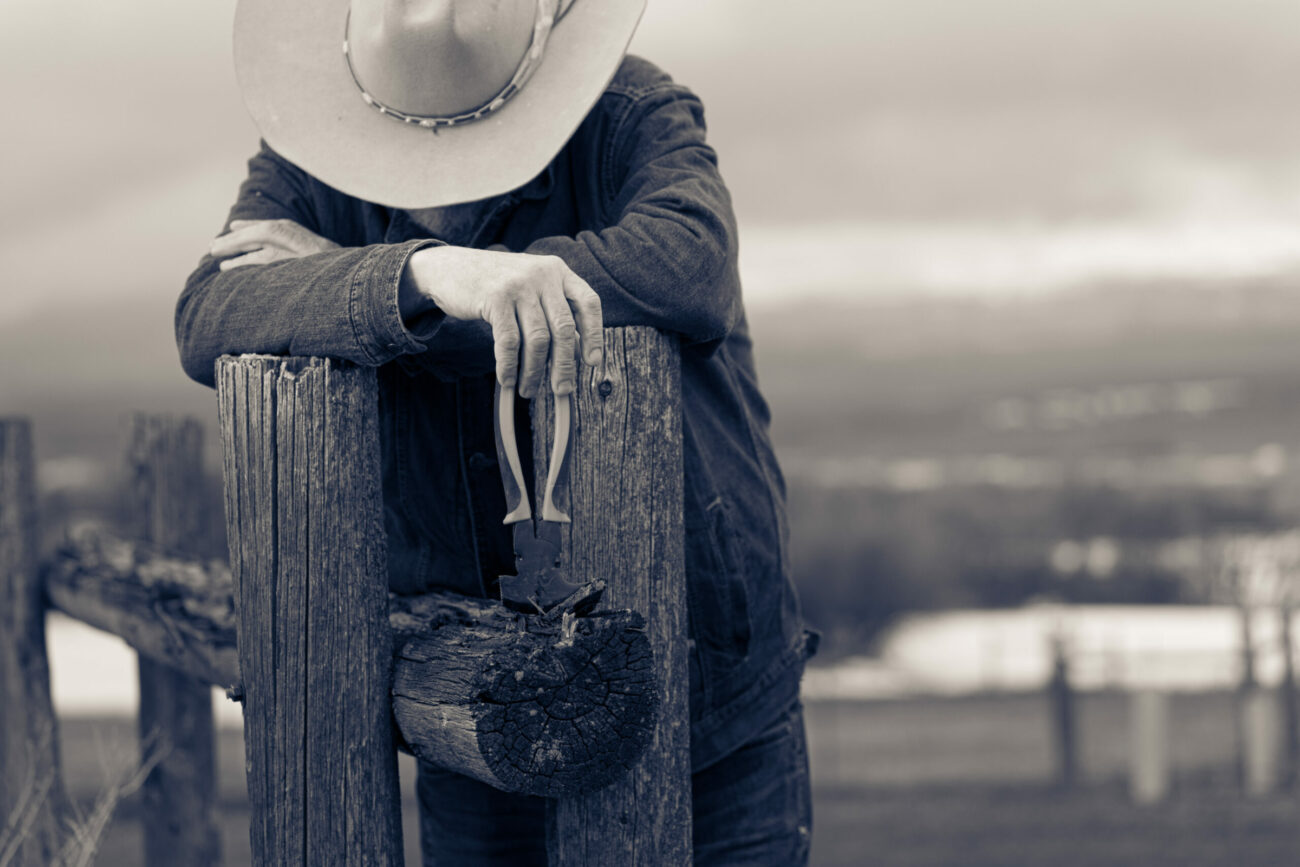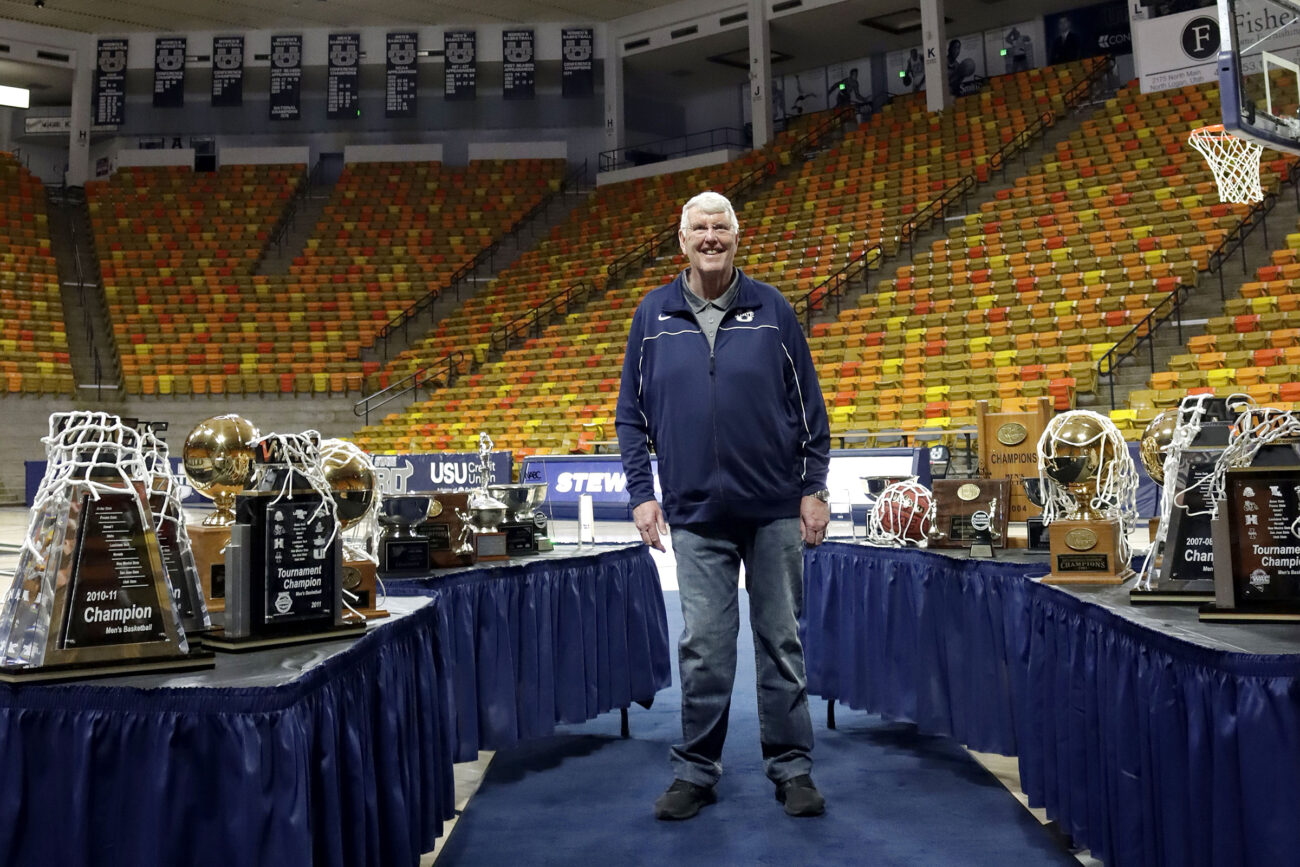Sugar + Hope
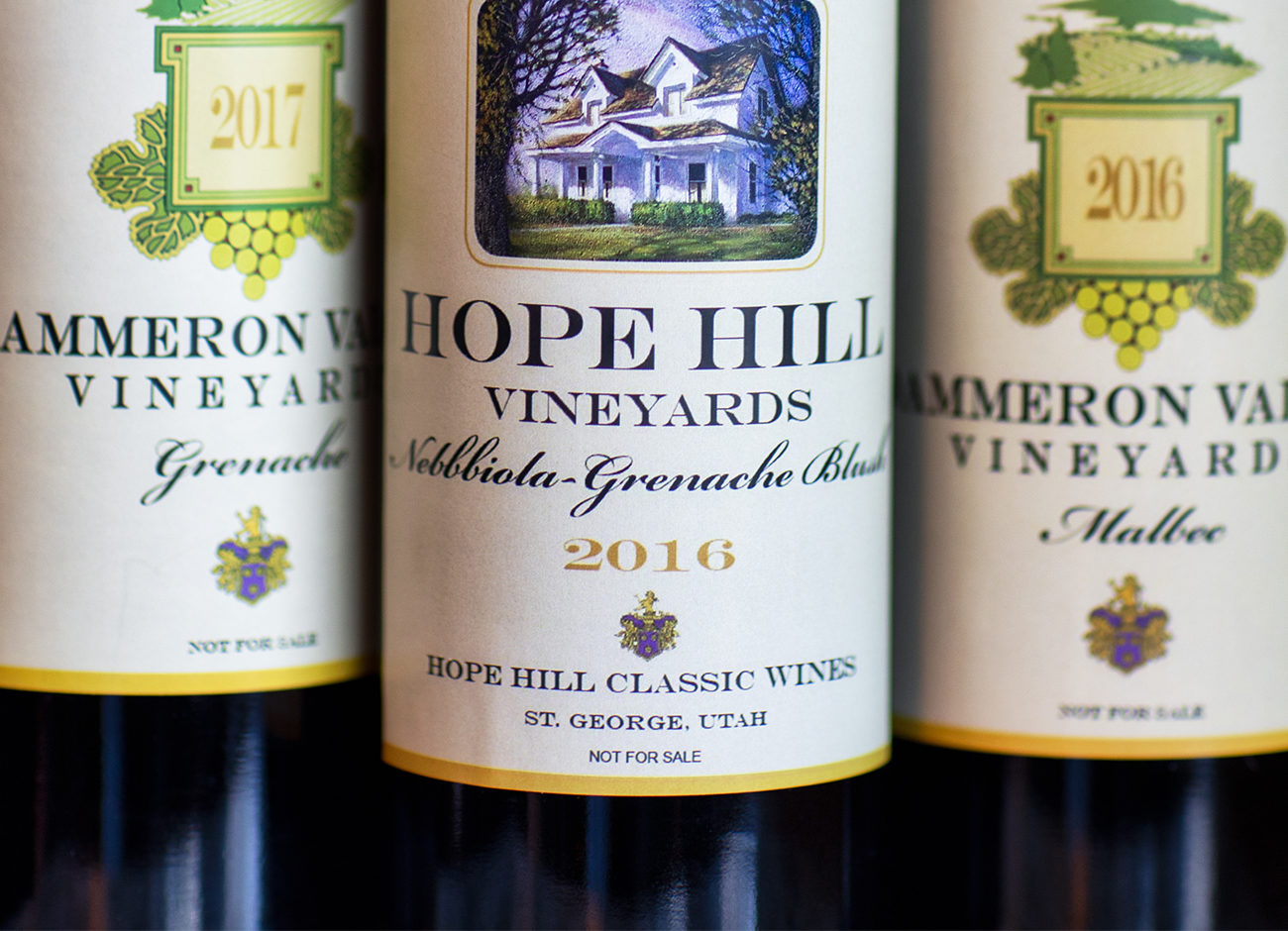
You know that spark when you are talking to somebody and they suddenly light up? That happened when Mark Bold walked into a room, just off his spacious garage, where 10 varieties of wine were fermenting in stainless steel tanks.
This was Bold’s laboratory and his experiments were proving his hunches correct. Distinctively good wines, can, indeed, be produced in the arid land surrounding St. George, Utah. Of course, Brigham Young could have told him that 157 years ago, because even though this region is known more today for turning deserts into golf courses, it enjoys an immensely rich, albeit abbreviated, viticulture heritage. And while neither Mark or his wife, Mary, spoke much about those grape-growing glory days of the mid- to late-1800s, if past is prologue, they have reason to be optimistic.
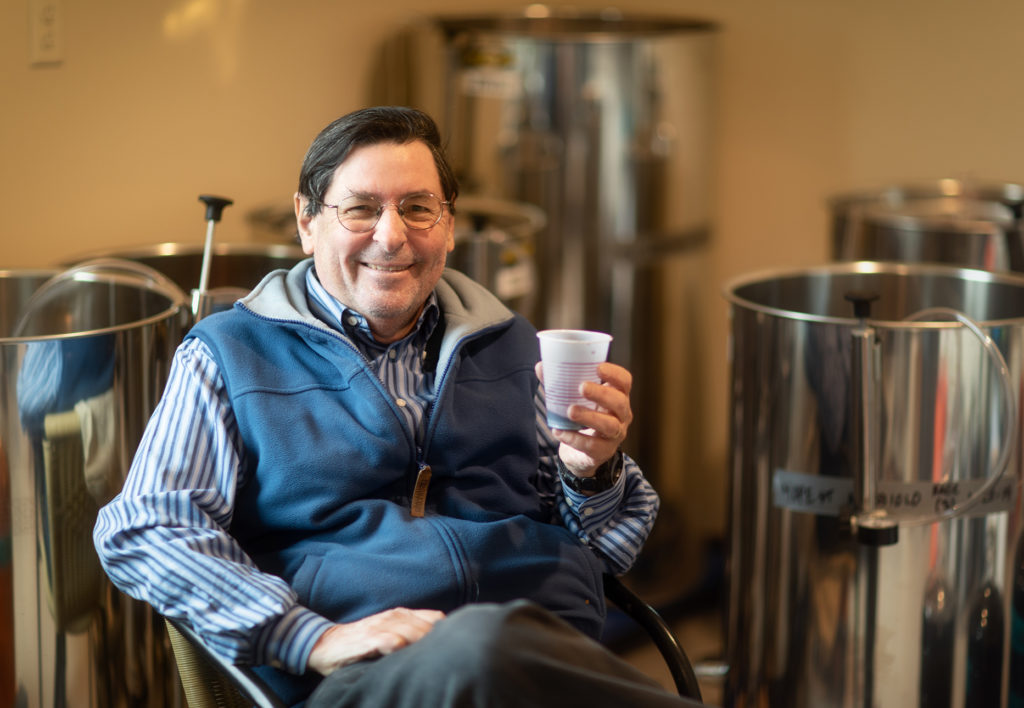
Mark Bold sampling one of his 10 varieties of wine.
And nothing says hope more than Bold’s grapes. That is the street they live on and the name of the three-quarter-acre vineyard gracing their backyard on the hillside not far from the iconic “Dixie” splashed in white letters on the vermilion cliffs above the city. They moved to St. George from San Francisco, where they spent most of their careers in finance, and at least two trips a year to St. George after Mary’s parents moved to the area in 1985. Her father, DeVere McAllister, had retired from Utah State University as a professor in agronomy. Mary, a Logan girl, graduated from USU in 1969 with a bachelor’s degree in economics and later received an MBA from University of California, Berkeley. Her father’s mission was to make the desert bloom, including the planting of a vineyard, which, in his later years, he turned to Mark for help. Their visits to St. George were frequent enough for Mark to not only become a pruner of vines, but under the tutelage of his agronomist father-in-law, a student of viticulture. His love of wine and travels to wine country spurred him on.
“He’s the one with the passion,” Mary says. “I’m the one with the tolerance–but limited.” Even so, while she may not hold the same enthusiasm for grape growing and winemaking as her husband, she absolutely shares his vision for how such an agricultural enterprise can come to benefit their community ecologically, economically, and even culturally.
Brigham Young’s vision was equally pragmatic. In October 1862, he declared that the southern colonies should supply the territory with wine “for the Holy Sacrament, for medicine, and for sale to outsiders,” wrote Dennis R. Lancaster in his 1972 Brigham Young University master’s thesis, “Dixie Wine.” Church members zealously took their leader’s advice to heart with vineyards popping up in towns from Toquerville to Santa Clara. They successfully produced and sold thousands of gallons. A thriving industry that Mark and Mary would love to revitalize, for if it was a success then, why not again?
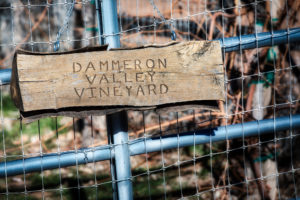
The area already has an active wine community, including some 1,800 members of the St. George Wine Club, Mark says. “It’s astounding.” Between people moving to the region from out of state, and the burgeoning tourist industry, he sees a strong market for it, but only if other growers take his lead. For in this enterprise, competition is not the enemy. It takes a village of vineyards to create a Napa Valley. In fact, it is by regions that wineries are classified as American Viticultural Areas, or AVA’s. Regions distinguished by geographical features. Washington County currently has four other small vineyards, in addition to the Bold’s.
“I think the potential for this area is huge,” he says. “And I think it could become an AVA, a really great wine-producing area. I’ve done proof of concept.”
As for its geographical features, it is where the Mojave Desert, Colorado Plateau, and Great Basin converge. Its distinction is not only sun-filled days, but soil of quaternary sediment―a glacial residue of sand, silt, clay, and loam, with a healthy dose of volcanic particulate thrown in for good measure, says Mark.
While he enjoys wine from his backyard vineyard, such as the Nebbiolo-Grenache blend, the grapes ripen a bit too soon in the St. George heat. Cooler summer evenings extend hang time for a better balance of sugar and acid. It’s a delicate dance and balance of soil, water, temperatures, and elevation for better flavor. Mark improved the balance by finding property nearly 2,000 feet higher 16 miles up the road in Dammeron Valley where he could expand his vineyard pursuits. That extra elevation provides a slight edge and explains why higher altitude communities like Toquerville did so well in Brigham Young’s day.
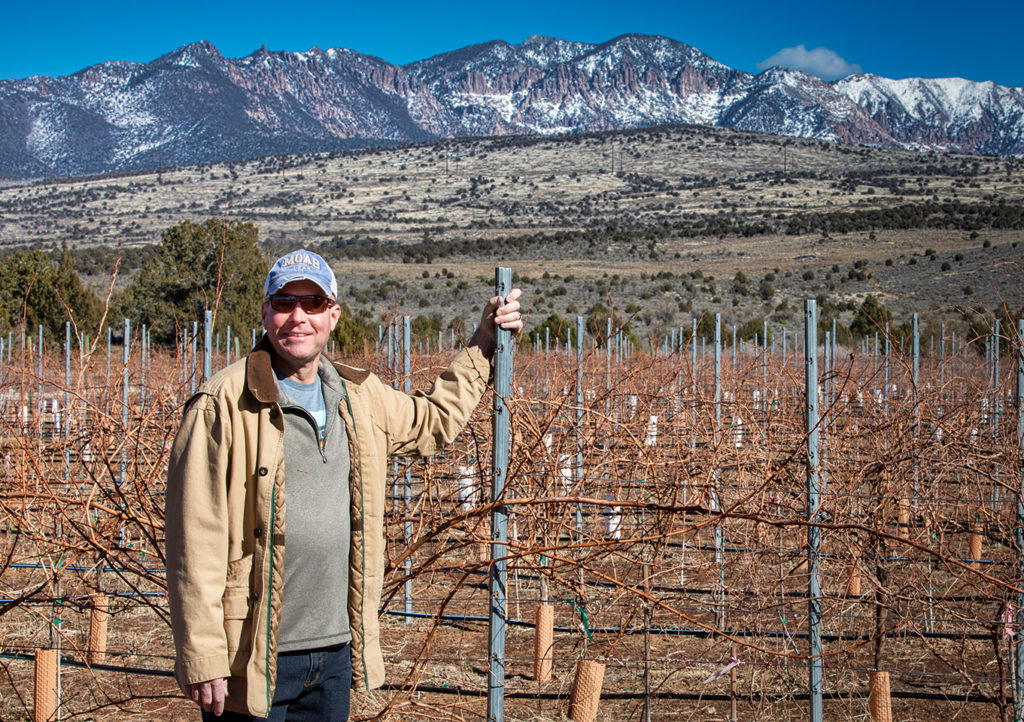
John Delaney, a partner of Mark and Mary Bold, stands in the newest section of the Dammeron Valley Vineyard.
It helped, as well, that Young could rely on the expertise of Toquerville’s Naegle Winery owner John C. Naegle, considered in his day “the dean of Dixie wine makers.” In this same tradition, Mark found John Delaney, a sommelier at a local fine-dining restaurant by night, and now his partner in vine by day.
Delaney walks the nine acres of vineyards like walking among his children. He eyes each vine’s potential, one internode at a time, patiently guiding shoots to grow in that all-important vertical direction for maximum growth and production. He talks about the Mediterranean and Spanish influence, volcanic soils included, on their choice of grapes in the lower vineyard like Grenache and Tempranillo, and a new section of Barbera that is in the works. But just to mix things up, they are going with Pinot Noir in their two newest vineyards. In a desert.
“It’s a little crazy, he says. “It’s all crazy. We are totally walking the gauntlet. It’s a juggling act of mother nature’s frost, pests, and disease. We are trying to keep everything maintained. It’s a constant battle with gophers, rabbits, deer, black mold, and whatever.”
Frost and floods, too. In 2017, just as the vineyard was becoming a showcase, it was hit with a late-May frost that killed 80 percent of the early green growth with only a weakened second growth to follow. “That was a gut punch,” Mark says. The only consolation was that Bordeaux, Burgundy and other great grape growing regions also suffered from killing frosts that year. Last summer hail and five inches of rain in less than an hour turned his Dammeron Valley vineyard into a swamp. But you press on, Delaney says. “You got to come in here and fight the fights. One at a time.”
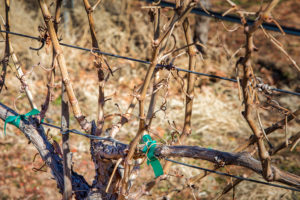
A well-trained vineyard consists of vines that grow vertically, such as these growing in Mark Bold’s Dammeron Valley Vineyard.
And so they go, 14 more rows in their newest vineyard, another 462 plants. This year they harvested around 9,000 pounds that produced just under 200 gallons, or about 100 cases. That is their limit, for now, until they are bonded and certified. Mark expects that to happen soon. He also expects to build a winery in the heart of his small Dammeron Valley vineyard before year’s end. Delaney envisions a small tasting room accompanying it. A place where visitors can sip wine and enjoy the snow-capped Pine Valley Mountain in the distance.
When that day comes, hope that you get to share the view—and a glass—with Mark. And if you do, watch for that spark.





